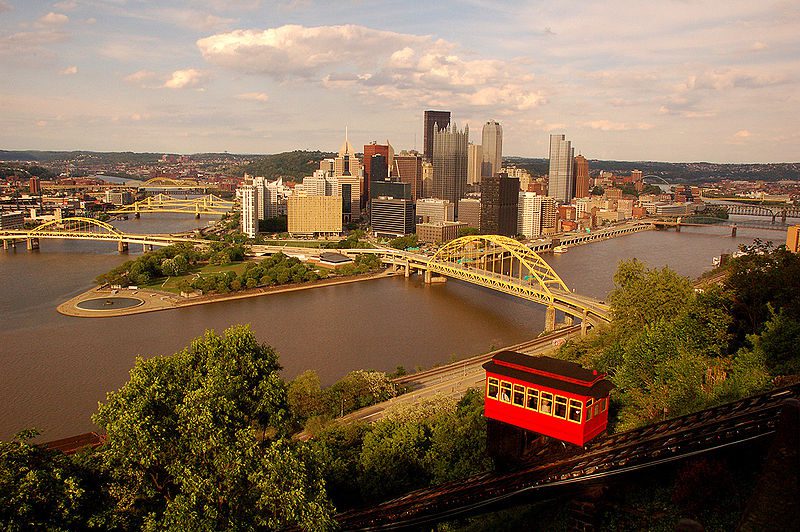Customer Engagement and Infrastructure Projects: The Missing Link
Credit to Author: Rebecca Zito| Date: Fri, 17 Mar 2023 15:28:53 +0000

For water and energy providers, consistent customer engagement has become a critical aspect of daily operations and overall success. Why? Modern convenience and technology have dramatically altered the expectations of today’s consumers. The silent energy provider is an antiquated concept, and modern customers expect more from their utility companies. They demand the same speed and information when engaging in any digital activity—from shopping online to viewing their energy bills.
Energy providers—whether they’re coal, gas, nuclear, hydro, wind, or solar—can utilize tactics similar to those deployed by the Pittsburgh Water and Sewer Authority (PWSA), which found that strong public and stakeholder engagement has a substantial impact on the success of infrastructure projects. Transparent communication and the proper tools can mitigate backlash or resistance from the community when implementing updates or overhauls. The following are a few ways that energy utility providers can deploy the right customer engagement tools when carrying out infrastructure initiatives.
Target the Right Audience
Before launching an infrastructure update or change, develop a clearly defined process to reach out to the individuals, households, and communities involved. The PWSA serves approximately 500,000 residents and businesses in the city and surrounding region. When PWSA decided to launch a $1.4 billion water, stormwater infrastructure, and sewage improvement program, we made sure to make the impacted communities part of the conversation. Using analytics and customer data, we adhered to the following steps:
- Deployed a geographic information system (GIS) to outline the project area.
- Identified the residents and businesses located within the region.
- Held community meetings that encouraged residents to ask questions.
- Used emails, automated phone calls, door hangers, and letters to provide residents with consistent updates during different stages of the infrastructure project.
- Created a dedicated project page on our website, updating it with detailed information on current project status metrics, such as construction impact and estimated length of time to completion.
- Harnessed the power of social media to expand project awareness during each stage of the project.
- Encouraged two-way communication with the involved communities both on social media and during in-person meetings.
When the focus was more educational and a more personal touch was needed—as was the case in the development of our Stormwater Strategic Plan—we recruited and engaged community ambassadors who lived in specific neighborhoods and communities. The ambassadors were encouraged to reach out to people who resided in these areas by hosting small tabling activities, conducting surveys, and joining PWSA staff at community events. This added a more neighborly element to the conversation, which helped the utility and the community.
Stay Adaptable and Remain Open to Feedback
Accepting feedback—whether positive or negative—can be intimidating. Whether you’re holding an in-person community meeting or receiving comments via your social media channels, it’s vital to encourage and accept input and feedback from the community during various stages of design. Remain transparent about how any upcoming changes and implementations will impact the community and be open to hearing suggestions for improvement.
The PWSA has also had success with developing advisory groups that include community stakeholders and partners. When launching new programs likely to impact many customers, it’s helpful to create a diverse group of community representatives.
This can help energy providers identify any challenges before an initiative’s implementation and encourage an honest, two-way conversation that focuses on awareness and understanding, allowing anyone directly impacted by an expanded service or new program to express their concerns or questions.
Harness the Power of Technology
Having face-to-face interactions with the communities we serve is important, but digital customer engagement also plays a vital role in developing an effective infrastructure plan. A digital customer engagement solution benefits utility customers. It also helps organizations like the PWSA improve operational efficiencies and allocate resources properly.
Remember that people are busy. If a customer has a question about an ongoing infrastructure project and can’t attend a community meeting, they can visit the project webpage for the latest information or email the project manager directly.
Keep Learning
The Four Mile Run Stormwater project is an initiative that will focus on the construction of a stormwater-only pipeline that traverses through a low-lying neighborhood known as “The Run,” located at the bottom of the Four Mile Run Watershed. After completing a detailed review process with Pennsylvania state regulators, we had to rethink the original design and will advance the redesign of this project throughout 2023. This project will redirect stormwater from The Run to the Monongahela River, which runs through the city’s downtown area and joins the Allegheny River to form the Ohio River, and eventually flows to West Virginia.
Outreach to residents in the watershed started early in the design phase. We explained the details of the stormwater initiative to residents and business owners, illustrating how it would positively impact their neighborhoods. The first phase—constructing the stormwater pipeline—will help alleviate issues such as basement flooding and water backups during heavy rainfall, which residents in The Run have endured for years. Throughout construction, we will maintain an open line of communication with residents to minimize impacts. Once complete, the new pipe will provide long-term benefits and address many public health concerns.
As projects evolve and move through different phases of design and construction, residents will have many questions. So, don’t hesitate to make yourself available to answer questions, meet with residents, and—if necessary—adapt your strategy.
Customer Engagement and the Utility
Transparency, awareness, adaptability, and ongoing communication are vital for infrastructure projects initiated by the Pittsburgh Water and Sewer Authority. Using similar strategies—along with community partnerships and available technology—can help other utilities successfully execute projects and benefit the communities they serve.
—Rebecca Zito is the senior manager of Public Affairs for the Pittsburgh Water & Sewer Authority.
The post Customer Engagement and Infrastructure Projects: The Missing Link appeared first on POWER Magazine.